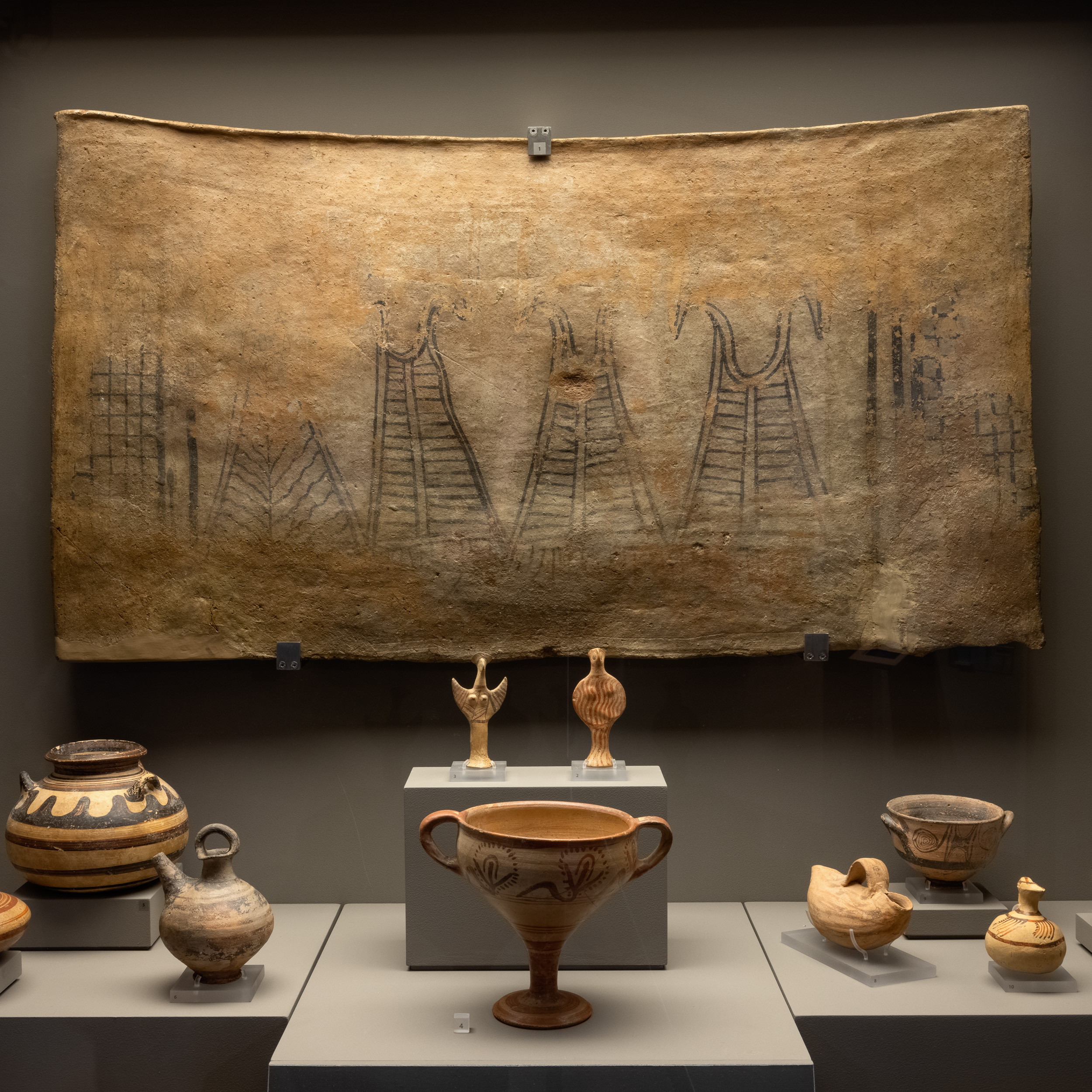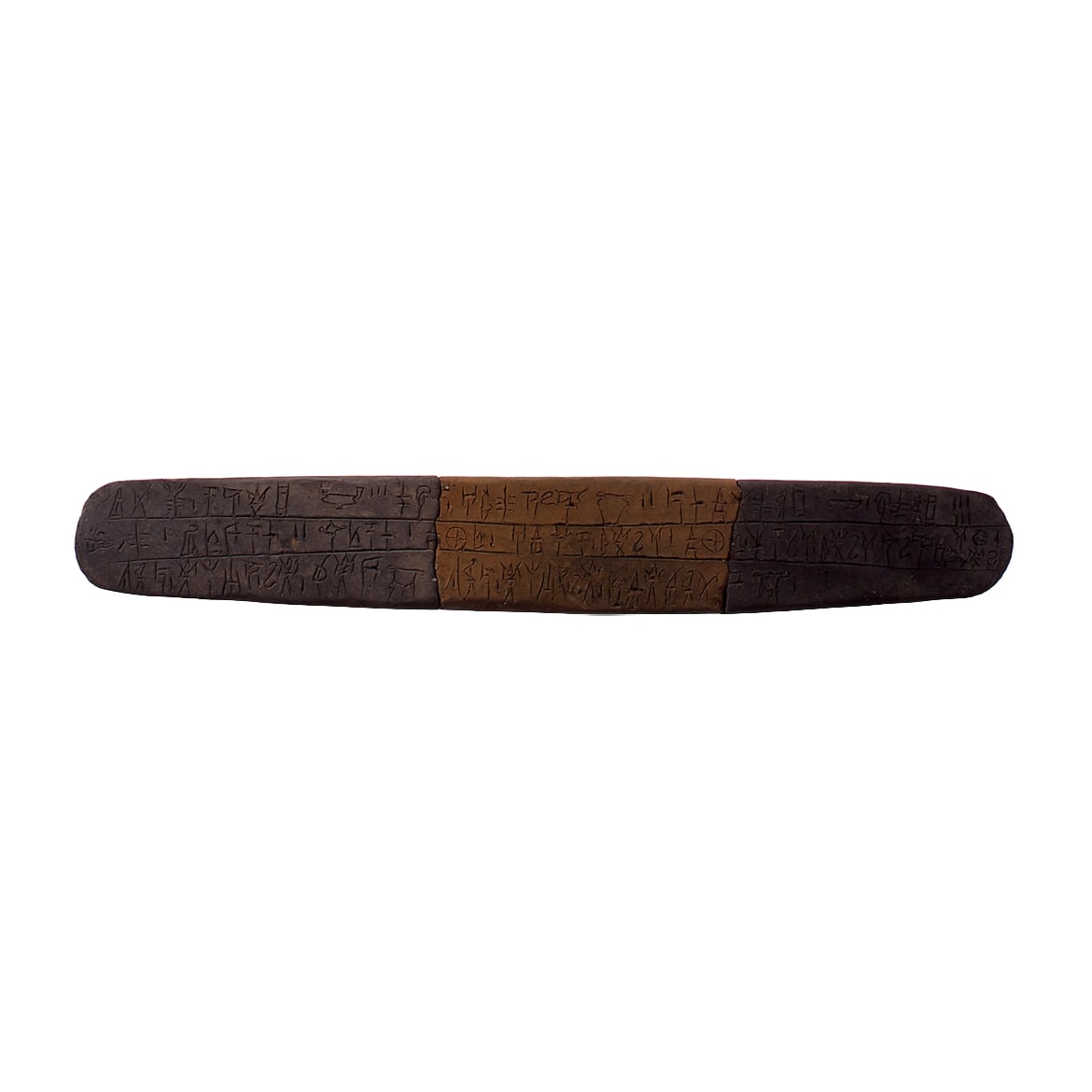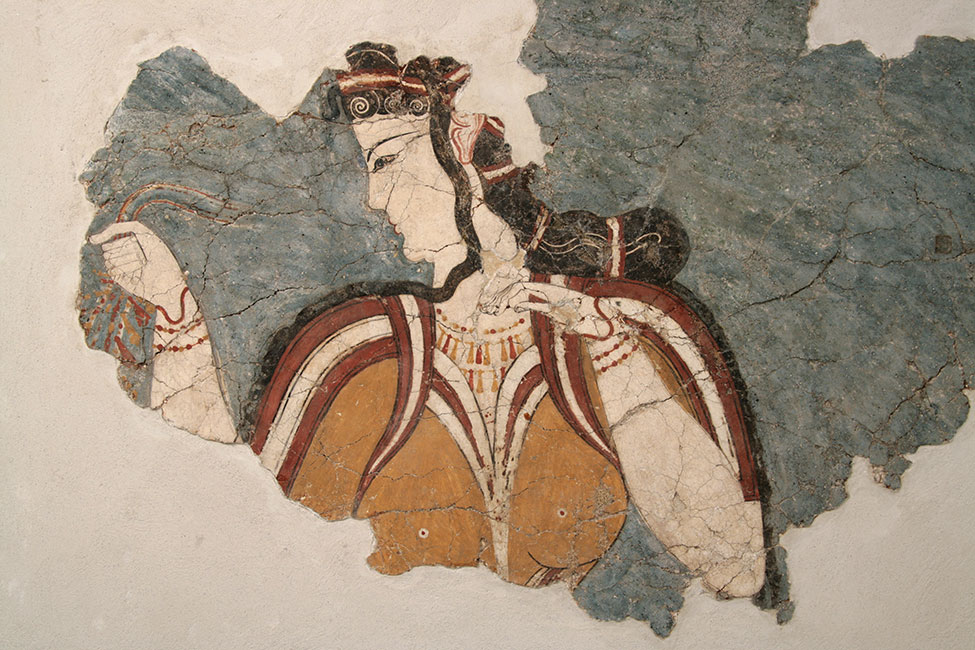Mycenaean Civilisation
ANCIENT GREEK ART

The Mycenaean civilisation, which flourished in the Aegean during the Late Bronze Age (1600 – 1100 BC), is one of the most celebrated periods of ancient Greek history and served as a basis for the Homeric epics.
Some of the most famous heroes of Greek mythology (e.g. Ulysses, Agamemnon, Achilles, Theseus, etc.) were probably actual Mycenaean kings and princes. Archaic and Classical Greek cities boasted of their Mycenaean past, and the language and religion of the ancient Greeks also had its roots in the Mycenaean period.
EARLY MYCENAEAN PERIOD
The Mycenaean civilisation emerged in mainland Greece during the 17th c. BC. For archaeologists, the first material evidence of the culture manifested in the famous Shaft Graves at Mycenae – a site that would eventually lend its name to the whole chronological period. The graves were remarkable not only for their size and shape (they were rather large and contained the remains of whole families, in contrast to the humble graves of the Middle Bronze Age, which held single burials) but also because of their extravagant contents.
Grave offerings included luxuries from Crete and the Cyclades, as well as numerous weapons, metal vessels, and pottery of local manufacture – the first real examples of ‘Mycenaean art’. The Minoan influence visible in these artifacts is so strong that many scholars have attributed the development of early Mycenaean craftmanship to Cretan artisans working for mainland rulers.
Restarting the trade
The Shaft Graves of Mycenae mark the end of a period of poverty and isolation for mainland Greece (which coincides largely with the Middle Bronze Age) and usher in a new era of creative interaction with Minoan Crete and the Cyclades.
The reasons for that change can probably be found in the increasing commercial activity of the Minoans, who, by that time (the Neopalatial period), were looking for new metal resources and trade routes in the Aegean and mainland Greece. Accordingly, the establishment of closer contacts with Crete and the Cyclades created favourable conditions for major economic and social transformations on the mainland.
Soon, extensive networks of communication and exchange were established, attracting the participation of several regions in the Peloponnese (the Argolid, Laconia, and Messenia) and central Greece (mainly Boeotia and Attica). Increasing wealth caused economic imbalances and competition among emerging social elites, which was clearly expressed in funerary practices. Early Mycenaean aristocrats were more interested in building monumental tombs than constructing impressive houses or mansions. This unusual preoccupation with death gave rise to what archaeologists consider the most characteristic type of Mycenaean architecture: the tholos tomb, circular stone structures with corbelled roofs and a side entrance, built partly underground and covered with an earthen mound, also called a tumulus (apparently an element that survived from Middle Helladic tumuli).
Dozens of tholos tombs were constructed in the Argolid and Messenia during the 16th and 15th centuries BC to accommodate the wealthy burials of elites and their families. Alongside these monumental tombs, rock-cut chamber tombs appeared, which were possibly used by lesser members of the mainland aristocracies. Chamber tombs were usually cut out of hillsides and varied in shape and size, though – like the tholoi – they were built with a side entrance and access-way (dromos).
Mycenaean Art
In arts and crafts, the Mycenaeans adopted sophisticated styles and techniques from Crete. Then they adjusted them according to local tastes, thus creating a distinct manner of artistic expression – more austere and inflexible than the Minoan style – in almost every field: pottery, metallurgy, jewellery, seal-engraving, the working of ivory, faience, glass, etc.
However, for the first two centuries of the Late Bronze Age, Mycenaean art was exclusively reserved for social elites. Its main products were luxury items destined to serve the aristocrats’ appetite for funerary display. As such, the most impressive early Mycenaean artifacts come from graves and only occasionally from settlements where objects of Middle Helladic tradition were still used.
LATE MYCENAEAN PERIOD
The Mycenaean culture reached its peak during the 14th and 13th centuries BC, at which point palatial complexes were built in Mycenae, Tiryns, Pylos, Thebes, etc. The mainland palaces are much later in date than the ones on Minoan Crete, but they had a similar administrative function, with large spaces for the storage of agricultural products and imported goods, workshops for the production of luxuries, and areas for official ceremonies and rituals.
The Mycenaeans borrowed most of the characteristics of their political and economic administration from the Minoans, especially after they conquered Knossos around 1450 BC, an event that familiarised them with the organisation of a palatial complex. We should remember, however, that the destruction of most Minoan centres at the beginning of the 15th c. BC had already diminished Minoan power and paved the path for Mycenaean expansion in the Aegean.
By the mid-14th c. BC, palatial complexes had been erected in major centres throughout the mainland (Mycenae, Tiryns, Pylos, Thebes, etc.). However, Mycenaean palaces differed from Minoan ones in several ways. They were smaller in size, usually built on top of steep hills, and instead of a central courtyard focused on the megaron, they had a main hall with an antechamber, a rectangular building with a porch, a vestibule, and a square throne room with a central hearth. Storerooms, archives, and residential quarters were built around the megaron, which had a small open court in front of it.
Writing and Religion
Alongside palaces, Mycenaeans adopted two other major achievements of the Minoans: writing (in the form of Linear B, a syllabic script that was derived from the Minoan Linear A) and religious decoration (in the form of fresco paintings, seal engraving, and figurines).
The translation of Linear B tablets found in palatial archives proved that the Mycenaeans spoke an early form of Greek and worshipped some of the ‘Olympian’ gods, including Zeus, Poseidon, Artemis, and Dionysus.
THE PERIOD OF THE “MYCENAEAN KOINE”
Those changes had a profound impact on mainland Greece as a whole during the 14th and 13th centuries BC. The political and economic organisations assumed a more structured form, with a network of palaces from Messenia to Thessaly ensuring control of agricultural production, a steady supply of metals and other raw materials, and social stability. Mycenaean art reached impressive levels of elegance and sophistication and gradually became available to non-elites. Some of the finest examples of Late Bronze Age wall paintings, ivories, jewellery, and metal vessels were produced in this period. Mycenaeans were also particularly active in maritime trade: such products as olive oil, wine, and perfumes, stored in high-quality decorated containers, were exported to the major ports of the Eastern Mediterranean and southern Italy in exchange for metals, ivory, and finished luxuries.
In general, at the end of the Late Bronze Age, the Mycenaean civilisation showed exceptional homogeneity, which is evident not only in art but also in religious worship, burial customs, architecture, and social organisation. Researchers often use the term ‘Mycenaean koine’ to describe the cultural homogeneity that characterises the Aegean area in the 14th and 13th centuries BC.
“Cyclopean” walls
Engineering was another field that the Mycenaeans mastered, as evident in the construction of paved roads, stone bridges, dams for water collection, and above all, the colossal undertaking of draining Lake Copais. However, their most amazing achievement was the erection of massive fortifications around palaces in the 13th c. BC. The defensive system of Mycenaean citadels consisted of guarded entrances, arched galleries for unobstructed traffic in times of war, and secret passages to springs in order to ensure access to fresh water during sieges. We see similar fortifications in the citadels of the Hittites, which suggests that the Mycenaeans were in close contact with the Anatolian kingdoms.
The reasons for the construction of these impressive fortifications (called “Cyclopean” because the walls were constructed out of large stones that looked like they could only have been lifted by the legendary Cyclopes) are not entirely clear. It is apparent, however, that the final stage of the Late Bronze Age was a troublesome period in the Aegean. The extensive destructions suffered by all Mycenaean palaces at around 1200 BC – paralleled by similar disturbances all over the Eastern Mediterranean –caused the irreversible decline of the Mycenaean civilisation. Some of its traits (such as burial customs and pottery types) would survive for another 100 to 150 years, but its most impressive achievements, such as writing and painting, were lost, not to be re-invented until the 8th c. BC.








